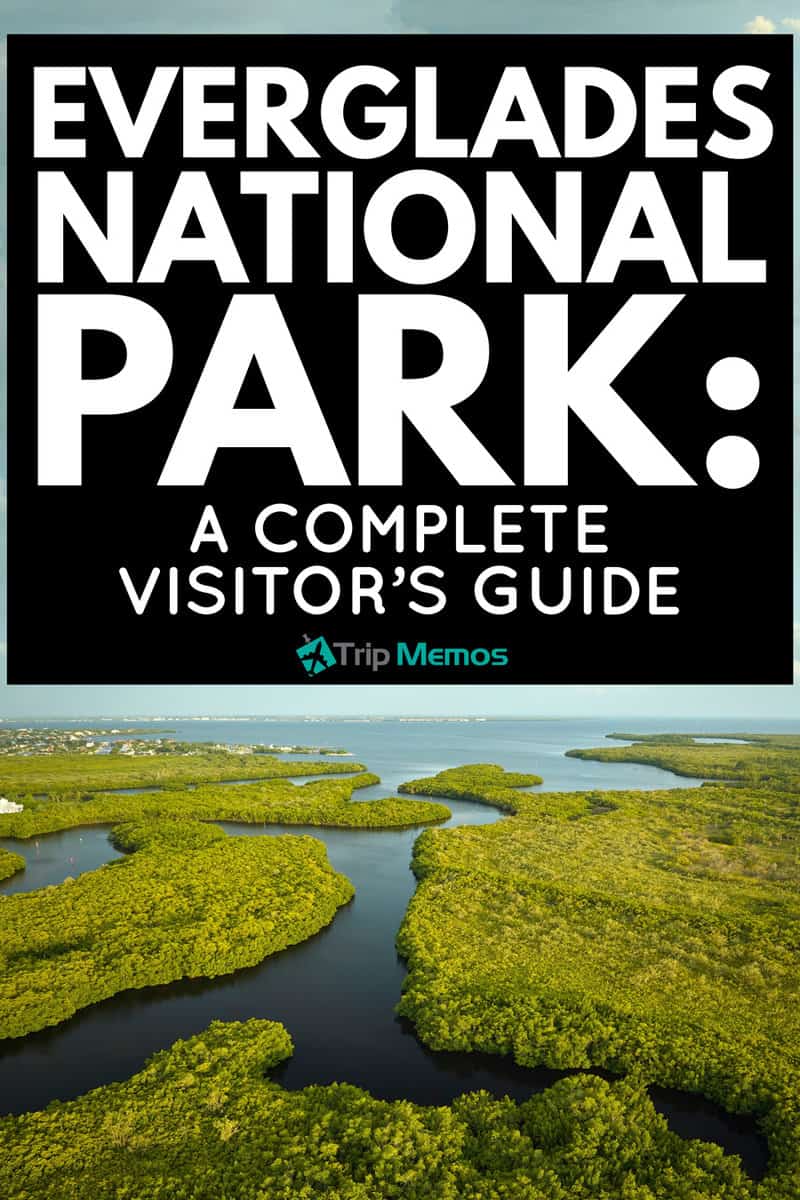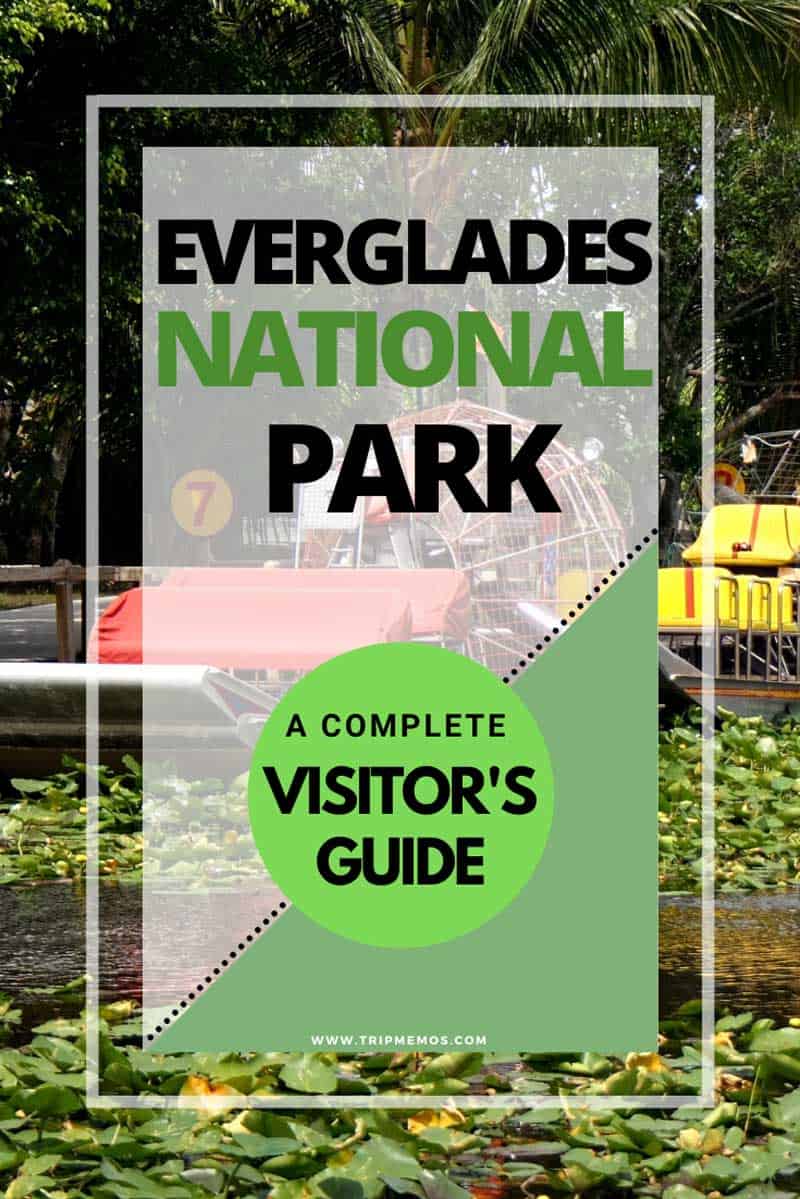Let me set the record straight if you're picturing a swamp when you think of the Everglades National Park.
That's what we thought too - but boy, were we wrong. Instead, we found ourselves in a world of crystal-clear waters, not the murky swamp we'd imagined.
It's an unexpected paradise we fell head over heels in love with.
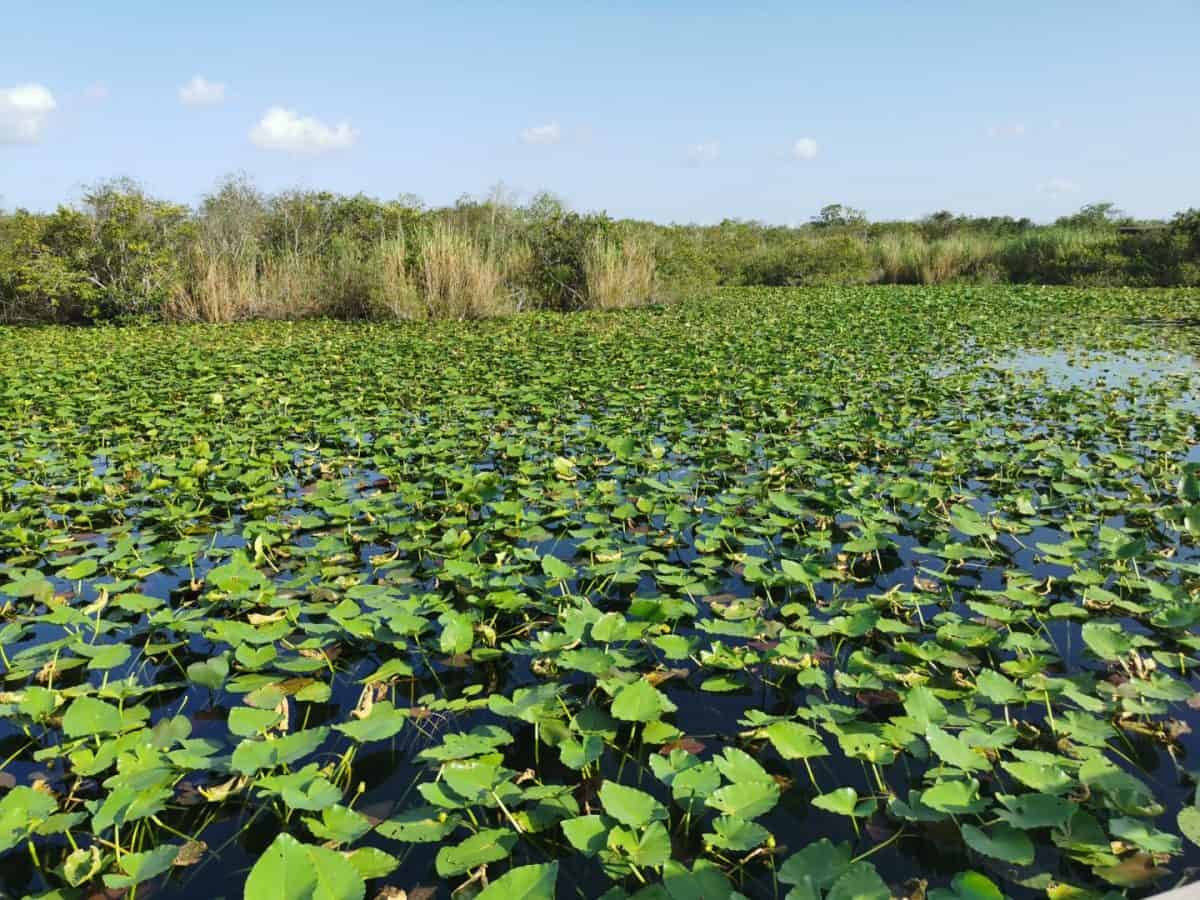
It's the wildlife that really makes it, though. We're talking alligators. Lots of them. These prehistoric-looking creatures in their natural habitat - nothing comes close to that kind of thrill.
But it's not just alligators; the Everglades are teeming with an incredible diversity of life that keeps you on your toes.
We traveled to Shark Valley and the Ernest F. Coe visitor center area multiple times. We soaked up every minute of it, but it's important to mention that our experiences don't cover the whole park.
We've yet to explore the Flamingo area and the Gulf Coast area, so this guide combines our first-hand experiences with diligent online research.
Remember, the Everglades is vast, and each visit reveals something new. We're just starting, and we can't wait to dive deeper into this amazing National Park. Stick with us as we unpack the Everglades experience, piece by beautiful piece.
How to get to Everglades National Park
Everglades National Park is huge. With 1.5 million acres, this UNESCO World Heritage site is the third largest park in the Lower 48, smaller only than Yellowstone and Death Valley.
When it comes to large national parks, many areas are in fact inaccessible to the average visitor. The areas that are may take some planning to get to. This is certainly the case with Everglades NP.
There are four visitor centers in the park, reflecting what are essentially four areas that you can visit for sightseeing and activities.
Coming from Miami in a car - as we're about to do - you are facing the two arms of the park:
- Driving west, you'll cross Florida via the Tamiami Trail, US Highway 41. This will get you to the Shark Valley Visitors Center and the Gulf Coast Visitors Center.
- Heading south instead, you'll drive past Homestead, enter the park via the Ernest F. Coe Visitors Center, and eventually arrive at Flamingo Visitor Center.
The first route actually takes you out of park grounds for some of the way but this is the only way to see the Northern Everglades park. This is what the two options look like -
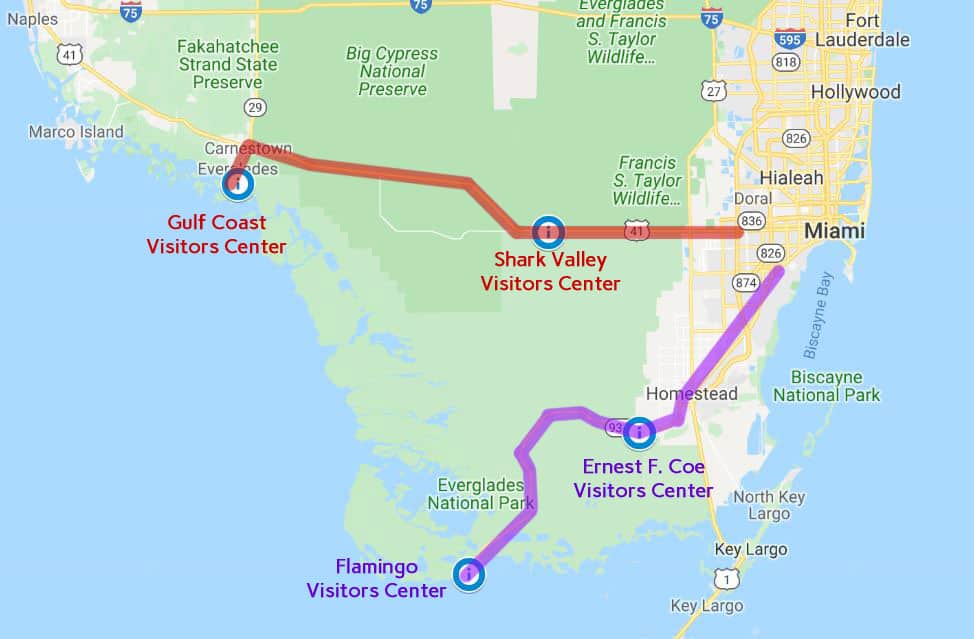
There is, in fact, a third route, going from the Gulf Coast Visitors Center to Flamingo but that one is a water route.
If you're planning on boating in the Everglades, you may want to explore that route, aka the Wilderness Waterway. Otherwise, keep reading, as we'll go further into what there is to do in the park along the roads.
Royal Palm & Long Pine Area
Heading south from Miami to the town of Homestead gets you to the southern entry point of the park and where you have two visitors centers.
Being close to Miami, this is where most visitors get to see the park.
Ernest F. Coe Visitors Center
Just three miles out of Homestead, FL, before you reach the entrance station to the park, you'll find this visitor center.
You can watch the park film here, talk to the rangers, buy postcards and begin exploring this region of the Everglades.
Open year-round. Hours are 9-5 during summertime and 8-5 Mid-December-Mid-April. Full details are available on this page.
The Royal Palm Information Station
Just six miles further into the park, you'll get to the Royal Palm Information Station, where some of the trailheads are and where you can find even more ranger-lead activities.
Pahayokee Overlook
13 miles into the park from the Ernest F. Coe Visitors Center, you can stop and climb this overlook for a panoramic view of the scenery.
Hiking Royal Palm and Long Pine Area
Trails are generally in the Long Pine area, so you'll need to drive further into the park from the Ernest F. Coe Visitor Center (approx. six miles in).
Here's a link to the trails page on the NPS site. And here's a copy of the trail map -

Anhinga Trail
This is one of the most famous trails in the park, thanks to the wildlife viewing opportunities.
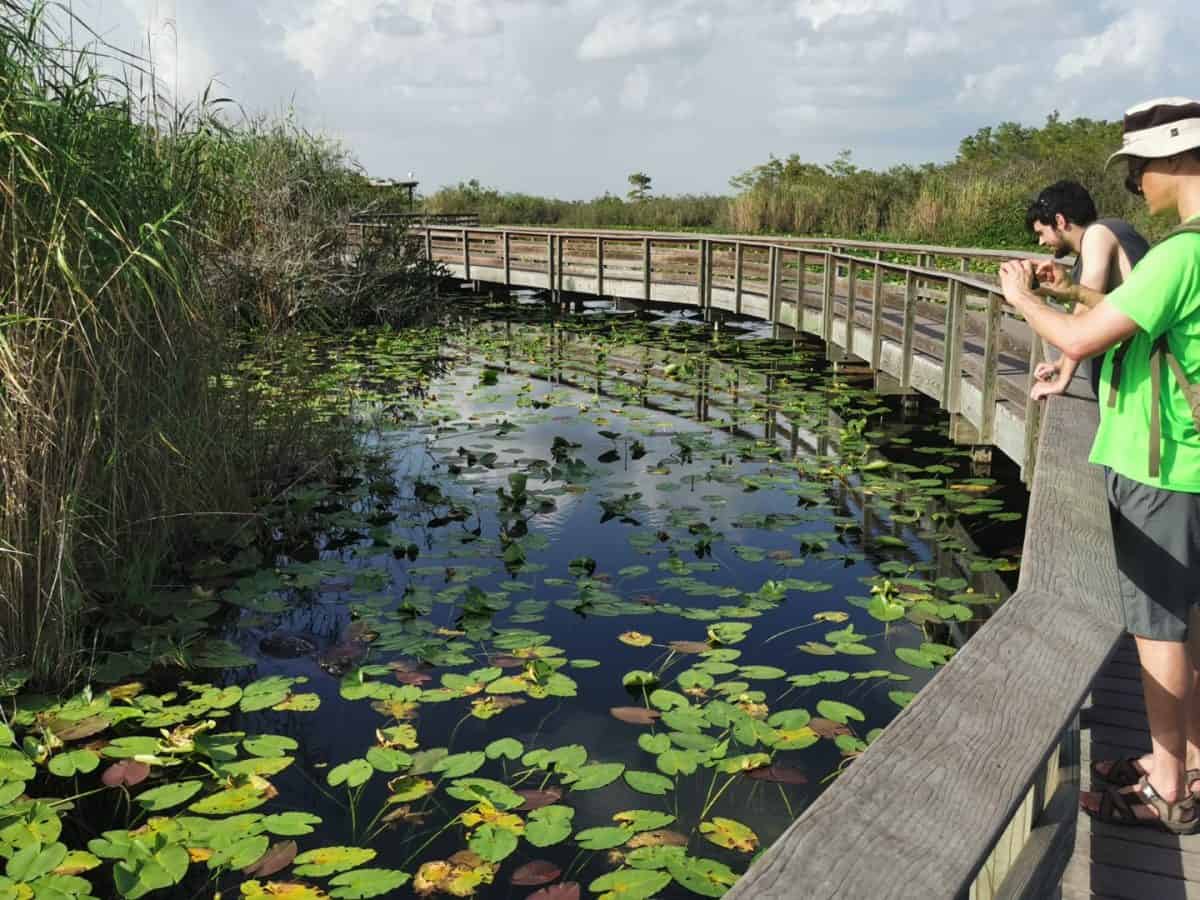
In the dry season (winter), you can see alligators, turtles and many bird varieties right from the boardwalk.
The Anhinga Trail is 0.8-mile long and wheelchair-accessible. If you're visiting from Miami and only have half a day to sample the Everglades, this is your spot.
Drive to Royal Palm station and spend time on the Anhinga Trail if you can, try to catch a ranger talk here too.
We visited this area twice. During summertime, there was not a lot to see. We managed to view a couple of alligators right by the trail, and that was it.
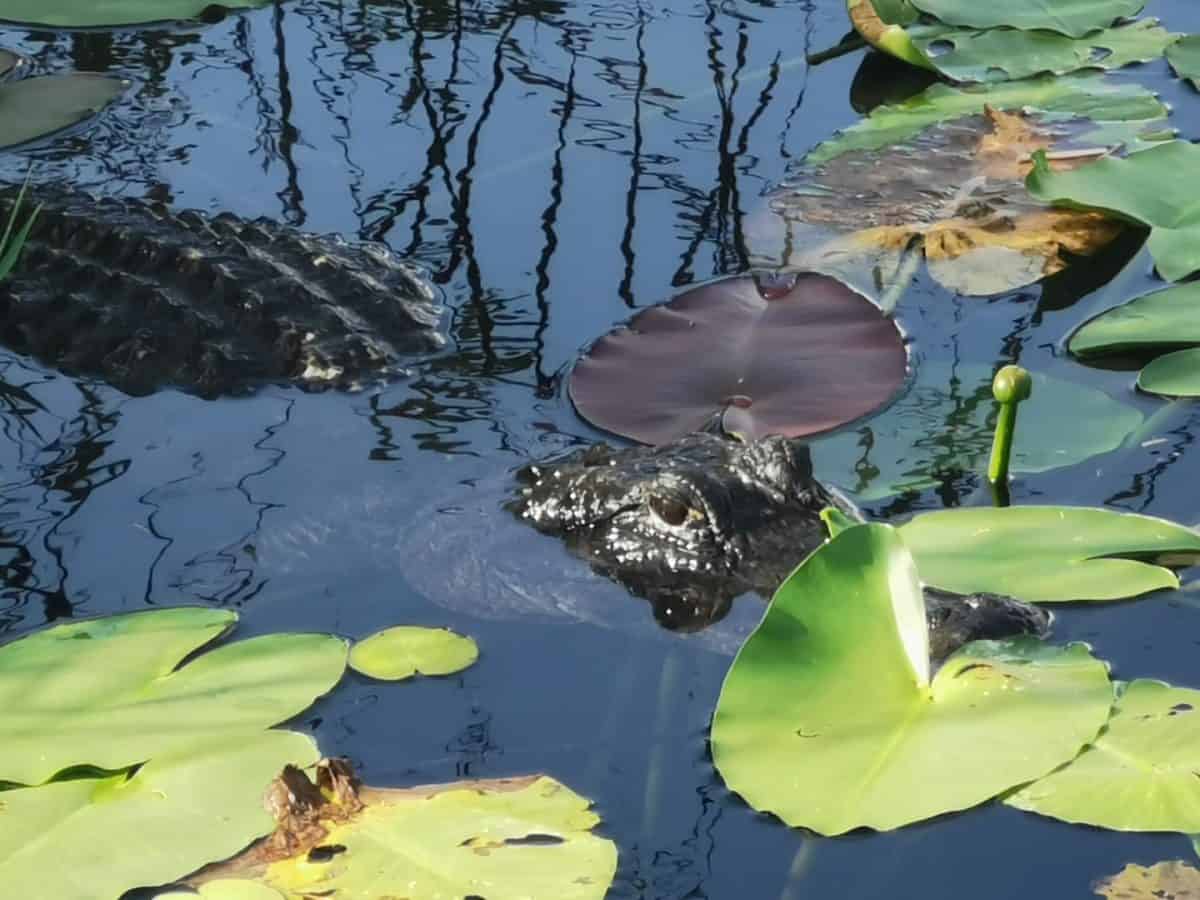
We did see a lot of one of Florida's largest bugs: The Eastern lubber grasshopper. They're quite cool, really. And not scary - at least not to me.
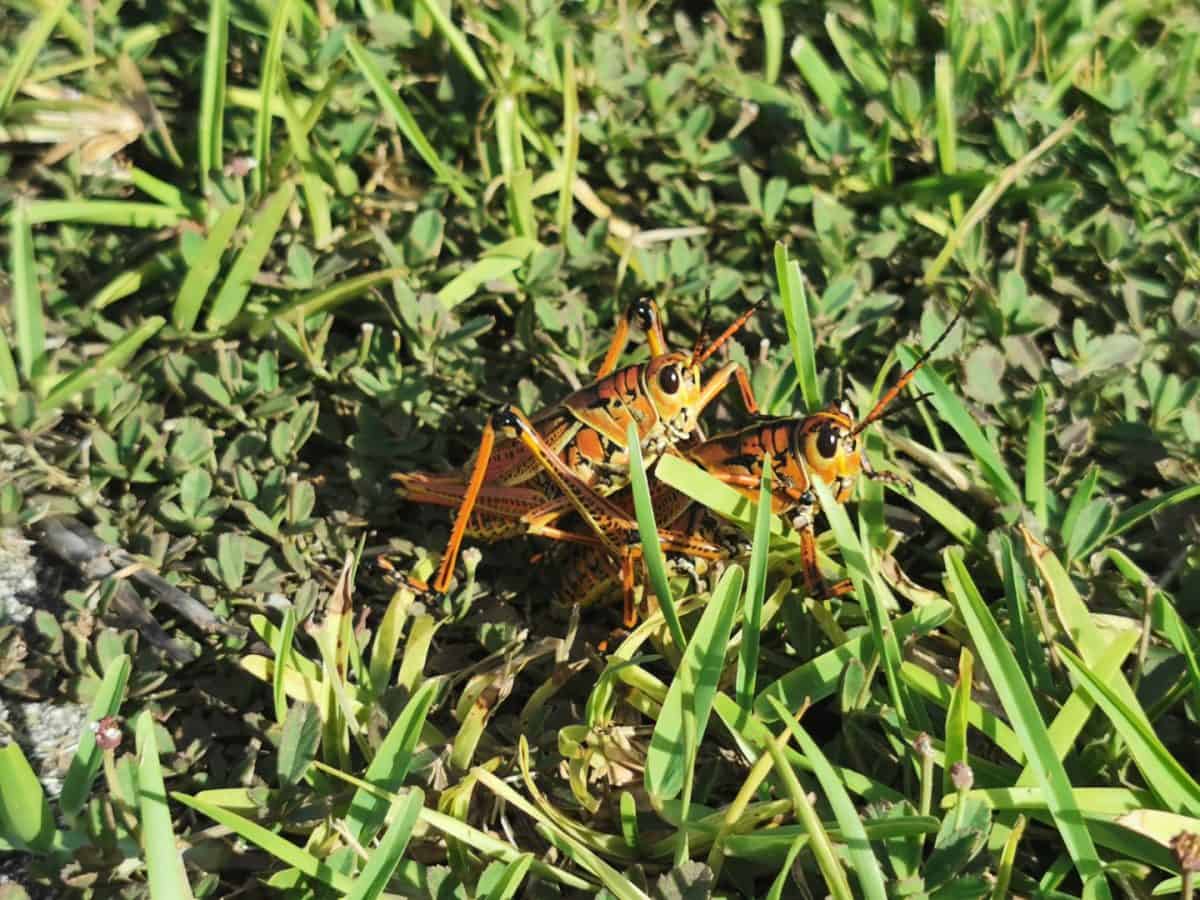
Heads up: the sun was going down by the end of our visit, and that's when other bugs started coming out. Do yourself a favor, bring bug spray, and be prepared to face the mosquitoes around that time of day.
Wintertime is a different story. This short video provides a nice glimpse into the variety of animals that can be viewed along the trail.
Gumbo Limbo Trail
A nice short walk that's wheelchair-accessible, this one is only 0.4 miles long and takes you through an area of gumbo limbo trees.
Trailhead: Behind the Royal Palm information station.
Pineland Trail
A 0.4-mile short loop trail that's paved but not a boardwalk, the Pineland Trail takes you through the local palm tree forest.
Trailhead: Along the park main road, in the Long Pine Key area.
Mahogany Hammock Trail
The 0.5-mile-long boardwalk trail goes through lush jungle-like areas and features the largest living mahogany tree in the country.
Shark Valley Area
Located on Highway 41, aka the Tamiami Trail, you can stop at the visitor center to watch the park video, see the displays and get information from the rangers.
There is also a nearby Observation Tower that you can climb for a better view of the surrounding sawgrass marsh.
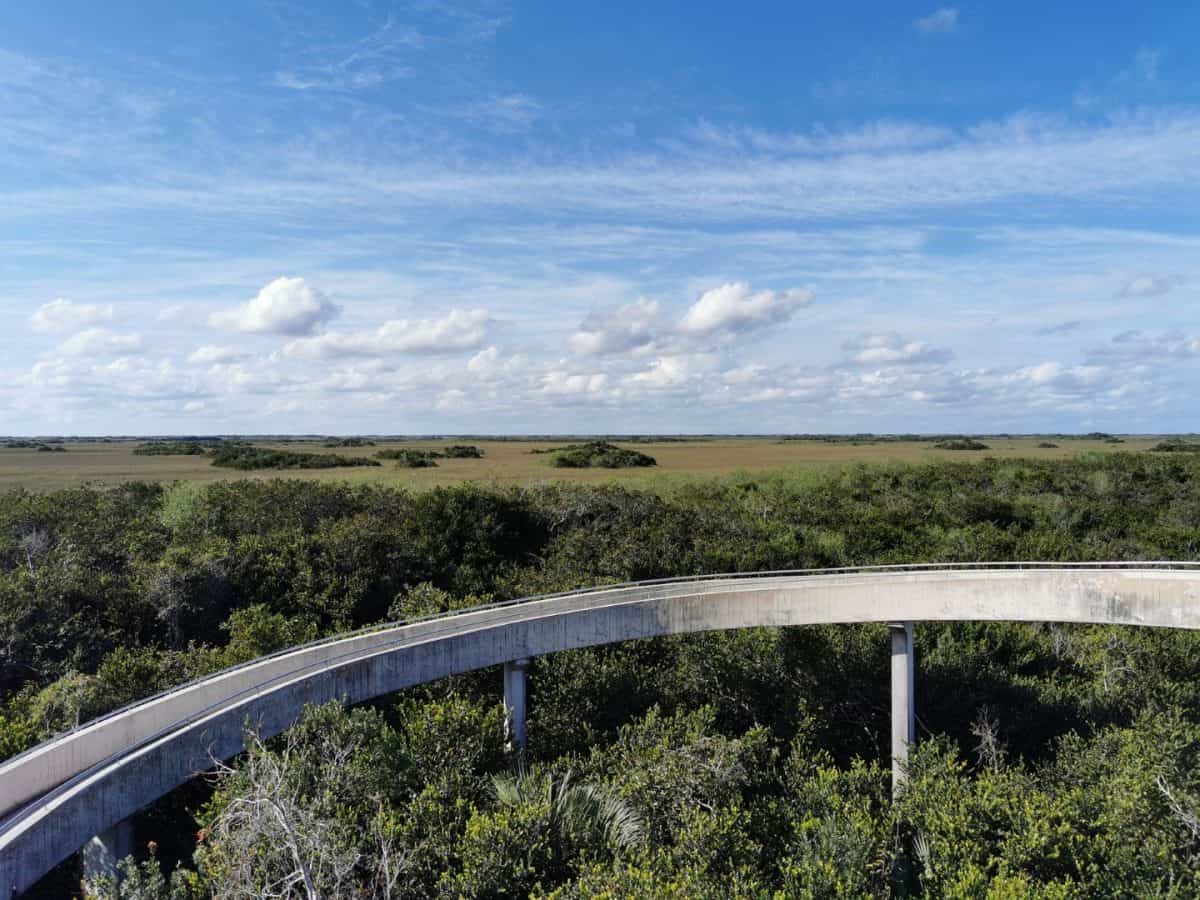
This visitor center is open year-round 9:00 AM - 5:00 PM. For more details check this page.
Why is it called Shark Valley?
Shark Valley doesn't really have sharks, nor does it look like a valley. Don't expect any mountain views here. Instead, this is the lower point between the western and eastern "ridges" of higher elevation in the Everglades.
Sharks do actually get into Florida mainland via rivers, with the nearby Shark River providing some nice habitat for sharks, including large bull sharks.
Read more: This River Near Orlando has not just alligators but sharks too!
However, you won't be seeing them in the shallow water of the Shark Valley area.
Ok, enough of the non-existing sharks.
Shark Valley alligators
What Shark Valley has in droves is alligators.
We were fortunate enough to visit Shark Valley twice. The first time was during the summer months.
The hot weather makes alligators say in the water, so they are less visible. Yet, this was when we had our very first alligator encounter in the Sunshine state.
We walked along the Bobcat Boardwalk and could hear the gators croaking around us, but couldn't see them.
Then we began walking on the tram road. We had only hiked for a few hundred of yards, when a huge alligator came out of the side of the road and made its way to the stream on the other side.
If you want to see the alligators, try coming during the dry winter season. The colder water drives alligators out, and you're bound to see them sprawled on the banks.
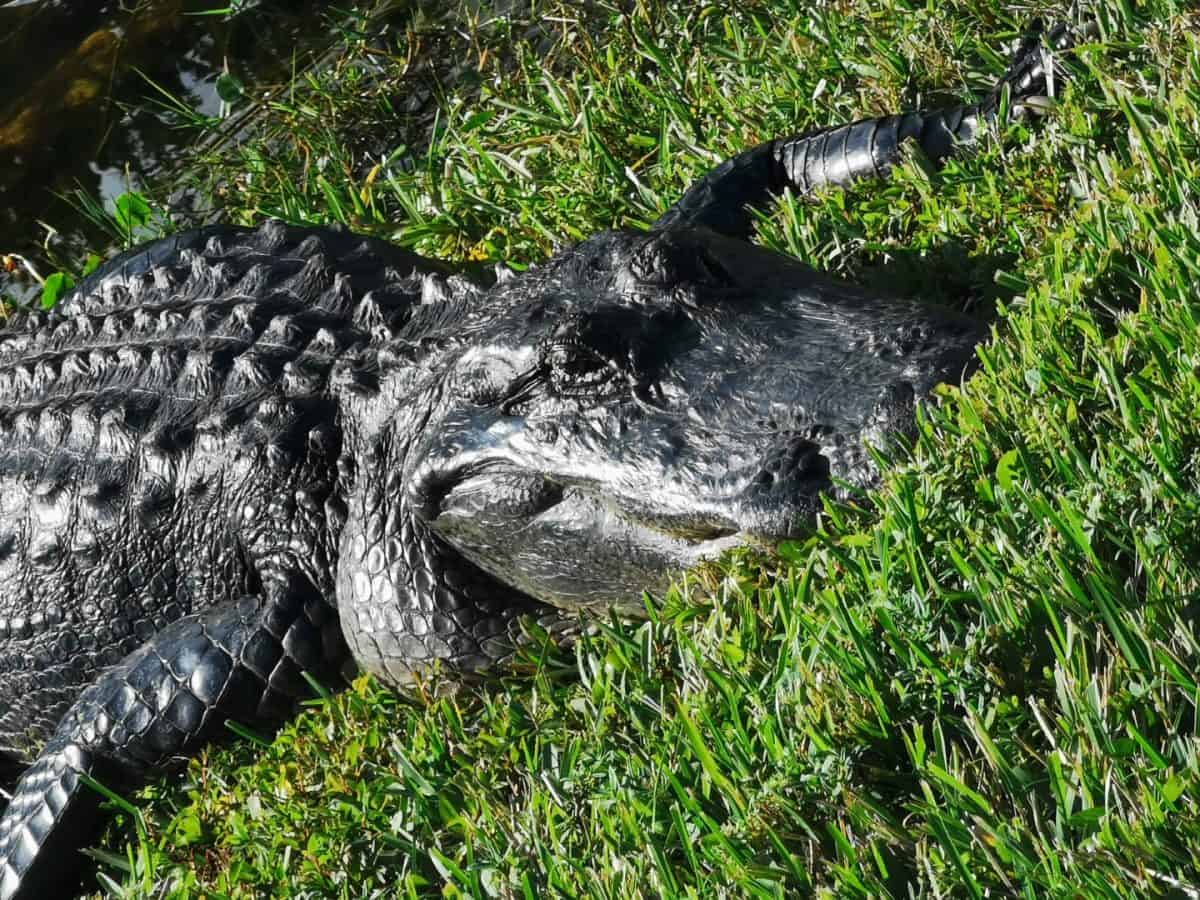
We got to see multiple alligators this way, including a mama with babies!
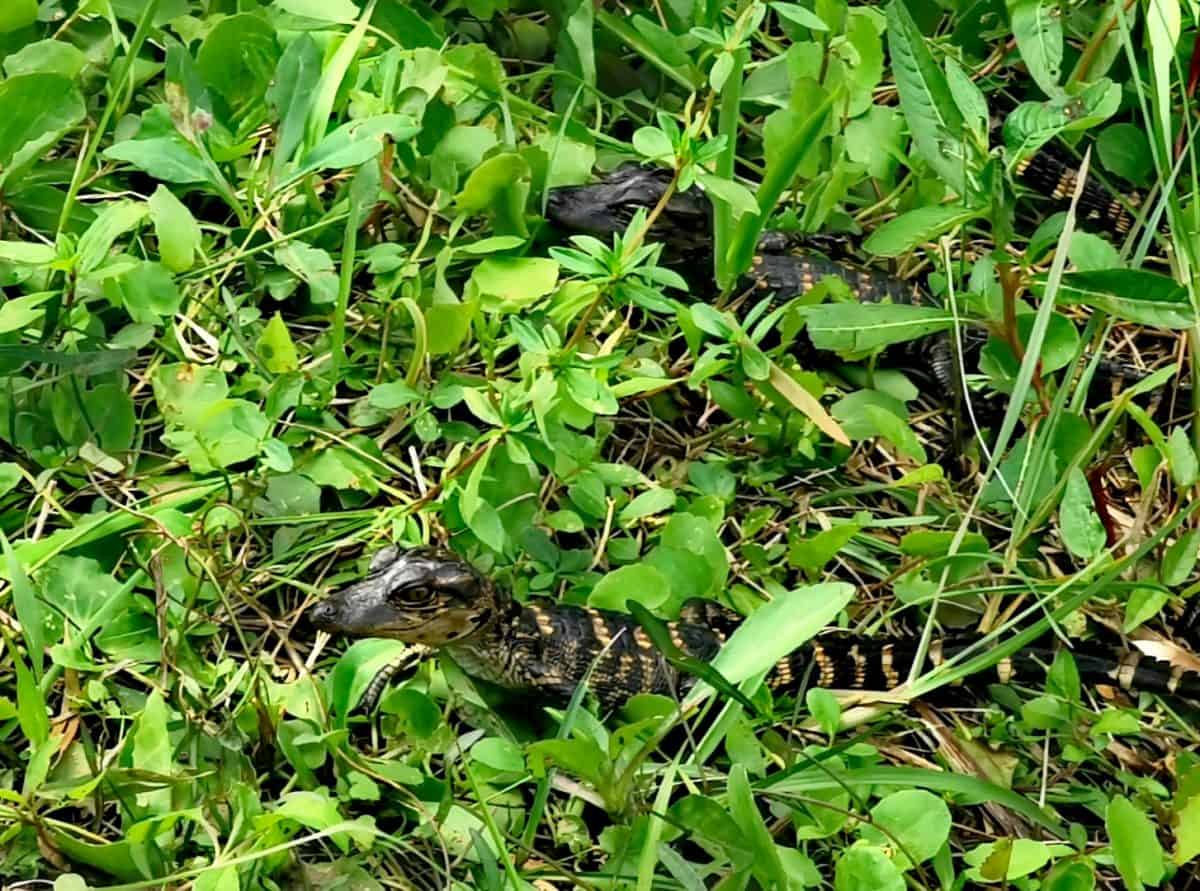
Shark Valley Area Activities
You can hike the tram road - a long paved loop road that goes deep into the Everglades for a total of 15 miles.
It's a long flat walk in the bright sun, so most visitors just hike the first mile and back, to look for alligators.
As the name suggests, there is a tram tour that you can take, and you can also rent a bike to make the full round. My husband biked the entire road, making for some cool photo ops of biking with the alligators.
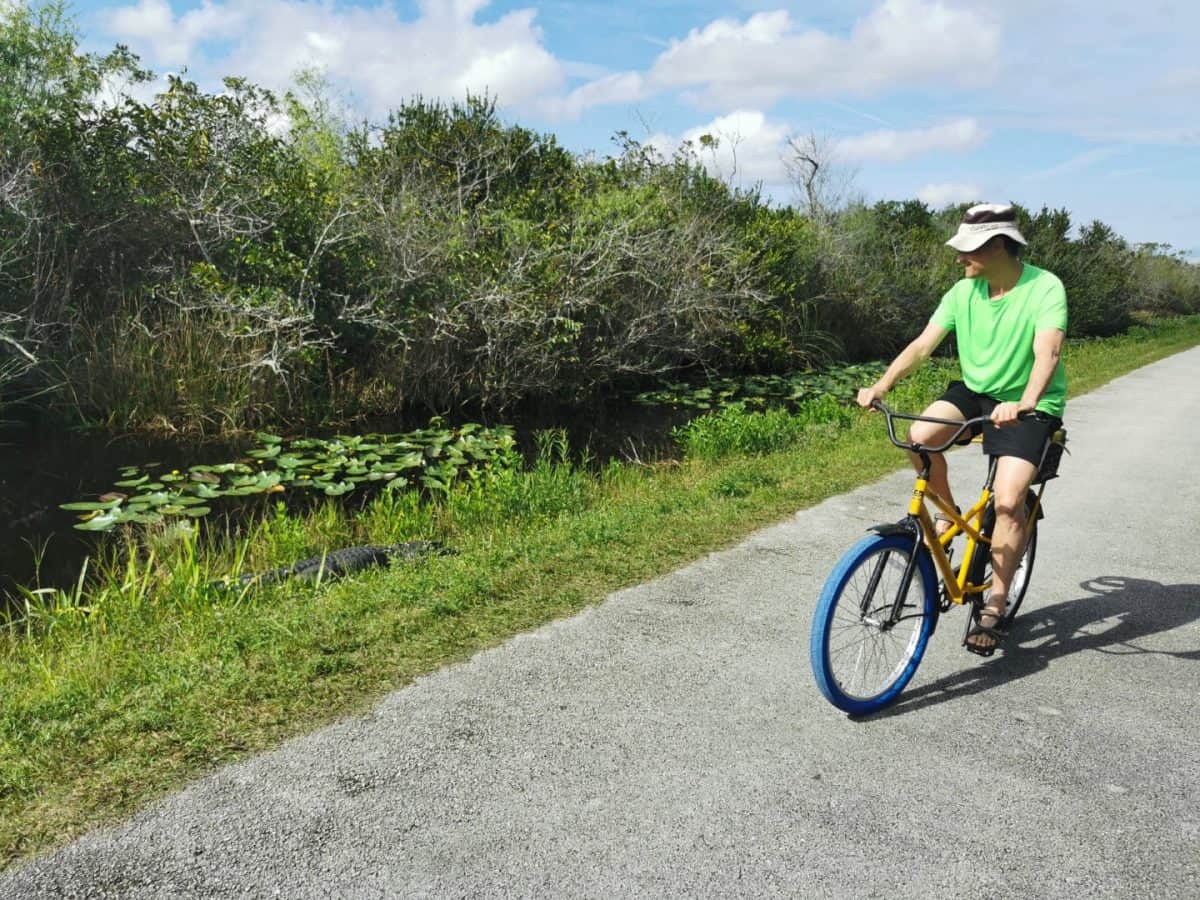
The Bobcat Boardwalk Trail
A short boardwalk trail that's wheelchair accessible, the Bobcat Boardwalk Trail is only half a mile long and give you a view of the Everglades in the Shark Alley area, from above the water.
The Gulf Coast & Thousand Islands Area
The northeast corner of the park is made of waterways, punctuated by hundreds of small islands and keys along the shores of the Gulf of Mexico.
This is the gateway to the Thousand Islands area of the park, along the Gulf of Mexico. It's also the beginning point for the Wilderness Waterway that crosses the park all the way to the Flamingo Visitor Center in the south.
This area, on the whole, is not as touristy or developed but it's worth exploring if you're up for a boat tour or kayaking in the mangroves. This is the site of the park-authorized boat operator: Everglades Florida Adventures.
The hours for the visitors center appear to be 9:00 AM to 4:30 PM, or possibly 5 PM (hard to tell from their web page).
The Flamingo Visitor Center Area
Driving further into the park on the road from Royal Palm takes you into the heart of the park, and to the furthest southern point a road will take you.
The drive from Ernest F. Coe center should take about an hour, so if you're coming in from Miami, that's actually a nice destination for a day trip in the Everglades.
The Flamingo area was severely hit by hurricanes in the last couple of decades. There used to be a lodge here with a fully-staffed visitor center but all that's left now is a campground and a smaller visitor center.
According to their website, they're only open during winter (the dry season) and even then, their hours are "intermittent".
There are a variety of short interpretive hiking trails available here, so even if you can't find a ranger around, you can explore the Flamingo area on your own.
Keep an eye out not just for alligators but for actual crocodiles! This is the only place in the United States where you can catch a glimpse of real crocodiles!
How to tell one from the other?

Crocodiles have longer pointier snouts, while the alligator snout is round and u-shaped. Crocodiles are usually lighter in color too.
While gators love freshwater lakes and streams, real crocs prefer the saltier brackish water which they can find in the southern end of Florida, including this area. Read more about that here.
Hiking in the Flamingo area
We only listed here the trails that are currently maintained. There is a long list of trails that the park authorities say are not maintained at this point, as they're reviewing the damage to the trails.
West Lake Trail
A short 0.5-mile-long boardwalk that takes you through the white mangrove forest and over a small section of West Lake. The trail is wheelchair-accessible.
Trailhead: On the main park road, approximately 7 miles before you reach the Flamingo visitor center.
Eco Pond Trail
Another half-a-mile long boardwalk, this time above a local pond, where you can view turtles and alligators.
Trailhead: Right by the Flamingo visitor center.
Guy Bradley Trail
A mile-long trail that takes you from the Flamingo Visitor Center to the campground. It's a great way to stretch your legs and get a glimpse of the Florida bay beach.
Trailhead: The Flamingo Visitor Center
What else can you do in the Everglades?
For many people, the very word "Everglades" conjures up an image of an airboat ride. Boating and kayaking in the Everglades is definitely an option. In fact, organized Activities in the Everglades include -
- Fishing charters
- Guided wildlife viewing trips and Eco Tours (including birdwatching tours)
- Kayaking and Canoeing
- Motorized Boat Tours
- Tram Tour (in Shark Valley)
- Guided photography tours
There are two operators that rent out kayaks and bicycles within the park itself.
Shark Valley Tram Tours - offering 2-hour long tram rides from Shark Valley with a park biologist on board, as well as bike rentals. See the website for more details.
Flamingo Adventures - offering boat tours as well as boat, kayak and bike rentals in the Flamingo area. See the website for more details.
If you're casting a wider net, looking for operators that are licensed to take you into the park but keep their offices in nearby towns, there are many options. You can see the full list of licensed tour operators here.
Airboat tours in Everglades National Park
If you want to take that iconic airboat tour, you have three options for doing so within the park itself - and numerous options outside the park too, in the general Everglades region.
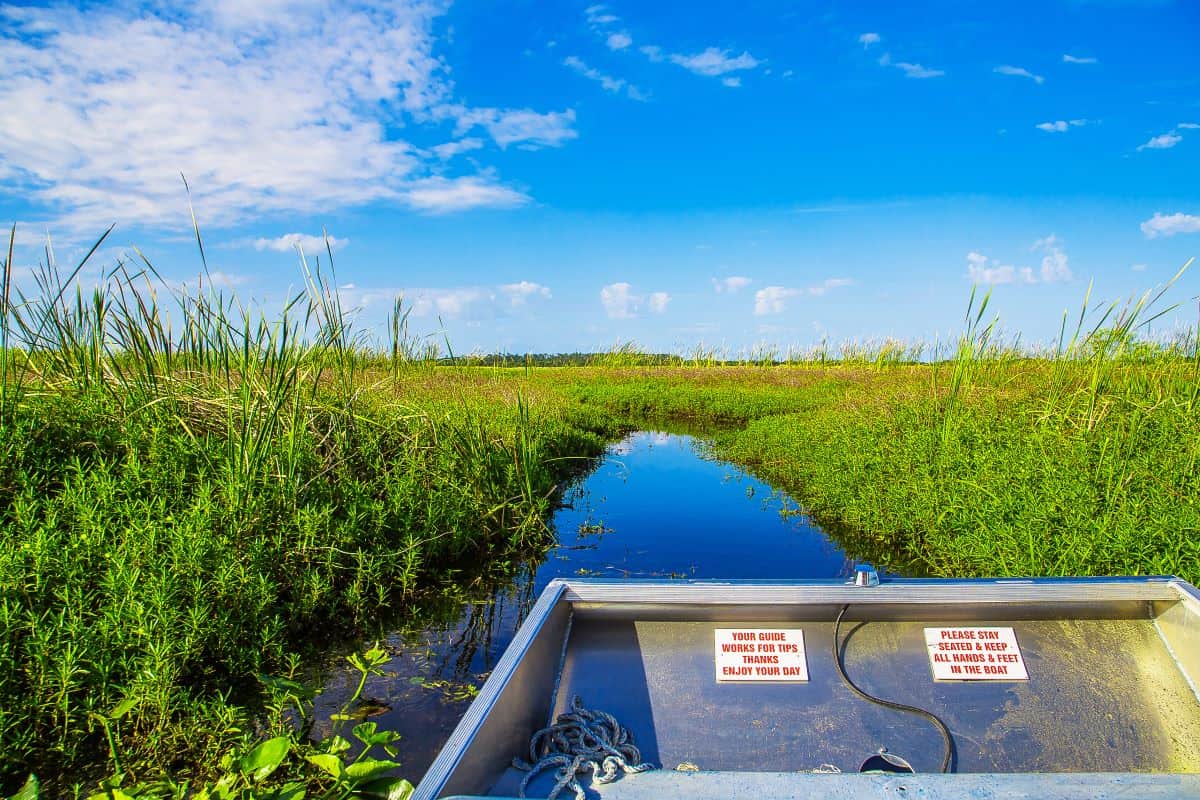
Airboat tours inside the park include the following three, all of them located along the Tamiami Trail road, not far from Shark Valley -
Coopertown airboats
In operation since 1945, Coopertown offers a personalized tour across a 9-miles stretch of the Everglades. You can then stay there to enjoy local delicacies in their restaurant. Not only will you probably see gators on the tours, you can get a taste of them for your meal too. The price is $23 for an adult and $11 for children under 12. There's an additional $3 park fee to pay. See more on their website here.
Everglades Safari Park
Your ticket gets you a 30-40 minutes long airboat ride in the park, as well as a wildlife nature show, and a walk along what they call "the jungle trail" to see exhibits and enjoy an observation platform. The price is $28 for adults and $15 for kids but that already includes the $3 park fee. If you've already purchased a park pass, they'll refund that part of your ticket. See more on their website here.
Gator Park
Here you can take the airboat ride, and also watch a wildlife show that includes alligator wrestling. If you're into that sort of thing - and we as a family are not. In fact, where we live in Israel, such shows are illegal, our of concern for the welfare of the animals. If you don't mind that bit, then Gator park offers the best value for money, with online tickets costing $19.90 for an adult and $14.90 for kids under 12. Prices at the gate are higher though. See more on their website here.
What's the best time to visit Everglades National Park
Timing your visit right is very important when it comes to the Everglades. This national park is said to have its own pulse, carefully in tune with the local sub-tropical climate.
The dry season in the Everglades begins in mid-November and lasts through to mid-April. For you as a visitor, dry is good. It means -
- More area is accessible within the park.
- More services are open, and for longer hours.
- You get to view more wildlife.
That last item is probably the most important. The park's visitors center that we listed above were built next to prime spots for wildlife viewing, but the wildlife is there mostly during the dry season. Come May's rainfall, the Everglades water level is on the increase and turtles, alligators and fish wander off to new seasonal ponds and marshes, followed by the fish-eating birds.
Also, the wet season happens to be during the hottest months of the year. If you visit this park during summer, expect lots of rain, hot days and not a lot of wildlife viewing. So, try to time your visit to winter months, if you can.
What to bring for your visit of the Everglades?
What to wear when visiting the Everglades would depend on your time of visiting. During summertime, think hot and humid, and during winter time, think cool-to-warm and still a bit humid. This is what averages look like, according to Wikipedia -
While this is generally short-sleeve weather, evenings and early mornings can be cool during wintertime, so a light jacket makes sense. If you're visiting during the rainy season (summer), you should carry a lightweight waterproof jacket or poncho and an umbrella. This is a national park, so comfortable shoes for hitting the trails are always a good idea.
Having scanned multiple sources, here's our list of things to pack for our day in the Everglades -
- Sunscreen
- Sunglasses
- Hats
- Lightweight clothes, preferably long-sleeve to protect from sun and bugs
- Good shoes
- Bug spray (especially during the wet season)
- Cameras and binoculars
- Bottled water (there are fountains in the visitors center for refilling those).
- Food and snacks (no restaurants within the park)
Where to stay when visiting Everglades National Park
When we visit national parks, we always try to stay within the park itself. Unfortunately, sometimes options are limited, which is when we try to find accommodation in nearby towns.
Staying inside the park
There are currently no hotels or lodges within Everglades NP, however, there are two campgrounds along the main park road. Both are managed by Flamingo Everglades. You can contact them and reserve some sites here.
Long Pine Key Campground
Located near the Royal Palm area, this campground offers RV sites and tent sites. There are showers (no hot water) and bathrooms, as well as a dump station for RV's and fresh water fill ups (not hook-ups though). You don't need to reserve a tent site - those are rented out on a first-come-first-serve basis. However, it's recommended to call in advance if you're looking for an RV site.
Flamingo Campground
Located at the end of the park road, by the shores of the Florida bay, this campground has both tent and RV sites, along with basic amenties such as bathrooms, showers and dump stations. No full-hookups available but some RV sites do have shorepower pedestals. There are pull-through sites too, for larger RV's.
Staying outside the park
As mentioned above, Everglades National Park can be a great day trip from Miami itself, all the way down to the Flamingo area. Key Largo and other coastal locations can also serve as your home base. You can also explore the park's northern areas while driving the Tamiami Trail, between Tampa and Miami.
However, if you want to explore the Flamingo area in-depth, your best location is Homestead. Prices vary, but it looks like you can find a room for two during the winter season (high-season for this park) for under $100, if you make your reservations early enough. The Garden Inn seems like a popular and affordable choice. If your budget allows, try the Towneplace Suites or the Courtyard by Marriott Miami Homestead.
Visiting the Everglades FAQ
We had many questions when planning our trip, and I'm sure others have wondered about the same issues as well. So, here are additional questions and what our research brought up so far -
How much does it cost to visit Everglades National Park?
When you enter the park, you can buy a park pass that's only good for Everglades NP. It will cost you $30 and will cover one vehicle (and all occupants) for as many visits as you want during a period of 7 days. If you live nearby, you can buy an annual pass instead for $55. If you have an annual national parks pass - aka America The Beautiful - it will also get you into this park.
Where is the best place to see the Everglades
That depends on how thorough you want to be, how long you have and your budget.
If all you have is half a day from Miami, and your budget is limited, you should visit the Royal Palm area and hike the Anhinga trail for the best wildlife viewing opportunities. If you have more time, travel further down the park road to explore the Flamingo area too. These won't set you back more than the cost of entering the park (free - if you have the annual parks pass).
If you have more time, add half a day at Shark Valley area. If time and budget allow, try to sample the Thousand Islands area by renting a kayak. And yes, if you can, try to go on a boat tour of the Everglades. It doesn't have to be an airboat - but it can be!
How much does an airboat ride in the Everglades cost?
That depends on the length of the tour, which in turn depends on where your starting point is. As mentioned above, there are three tour operators inside the park, along the Tamiami Trail road. They provide short tours at $20-$30 per adult.
You can find other airboat tours all over Florida, originating from Miami, Fort Lauderdale and even Orlando. They all take you through typical swampland hoping to see gators but vary in length and quality. Some will even pick you up from your hotel. Tours are usually 2-5 hour long and cost $150-$300 per person.
Can you swim in the Everglades?
Well, there's water there, so technically you could swim. However, it's not a good idea.
Within the park itself, swimming is simply not allowed:
Swimming/Snorkeling is prohibited in all canals, ponds, freshwater lakes, marked channels, and boat basins inside the park.
Can you cross the Everglades walking?
There's no hiking trail that crossed the national park, but you could walk along the Tamiami Trail road, if you wanted to.
Are there alligators in the Everglades? What about crocodiles?
Yes, and yes. In fact, the large reptiles are the main attraction for many visitors. Crocodiles live in the southern regions of the park and they're more rare.
Is visiting the Everglades dangerous?
Anything is dangerous to some extent, right? Even sitting at home and reading the internet. In fact, depending on your choice of site, it may be far more dangeours *wink*.
Seriously though, there are dangers in any national park and Everglades NP is no exception. The main risk is that of dehydration or heat stroke, especially during the summer months. Keep hydrated, especially when engaging in any physical activity, including hiking.
Mosquitoes are another issue here, especially during the summer (wet season). Have some bug repellant with you. Poison ivy and other poisonous plants grow here as well. Learn to identify them, and when in doubt, avoid contact with the local flora.
And with the local fauna too. You should keep a distance of at least 15 feet from all wildlife. There are big cats here. The local variety is the Florida panther, which is very much like a cougar or mountain lion. Crocodiles and alligators are the other top predators here. You're unlikely to see a panther, but if you come during the dry season, you're very likely to see gators. Stay away from them, even if they seem asleep. They can move quickly if provoked.
Also, keep young children close to you, especially near bodies of water. An alligator isn't likely to attack a grownup but a young child or a small pet is another story.
A map of Everglades National Park Attractions
We've put together everything into an interactive map, which we're sharing here with you -
That's it! With all the research we've done, all that's left is to get there! Once we do, we'll get back to this post and update it based on our own experiences in the Everglades. Until then, any questions, comments and feedback will be greatly appreciated - just leave them in a comment below!
Do you want to go to more places in Florida? Read below -
Top 10 Things To Do In Marco Island, Florida
Top 11 Things to Do in Daytona Beach, Florida
